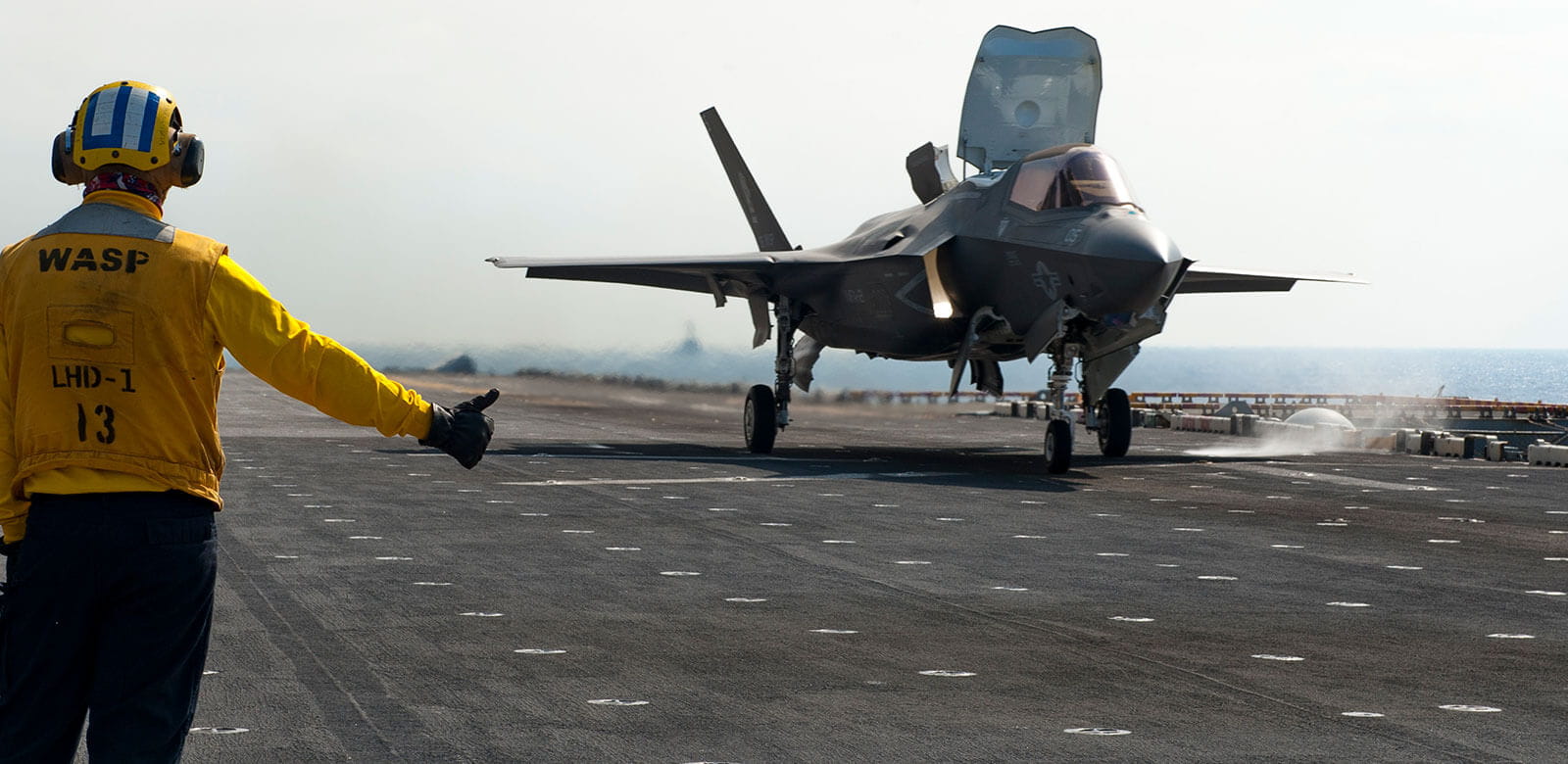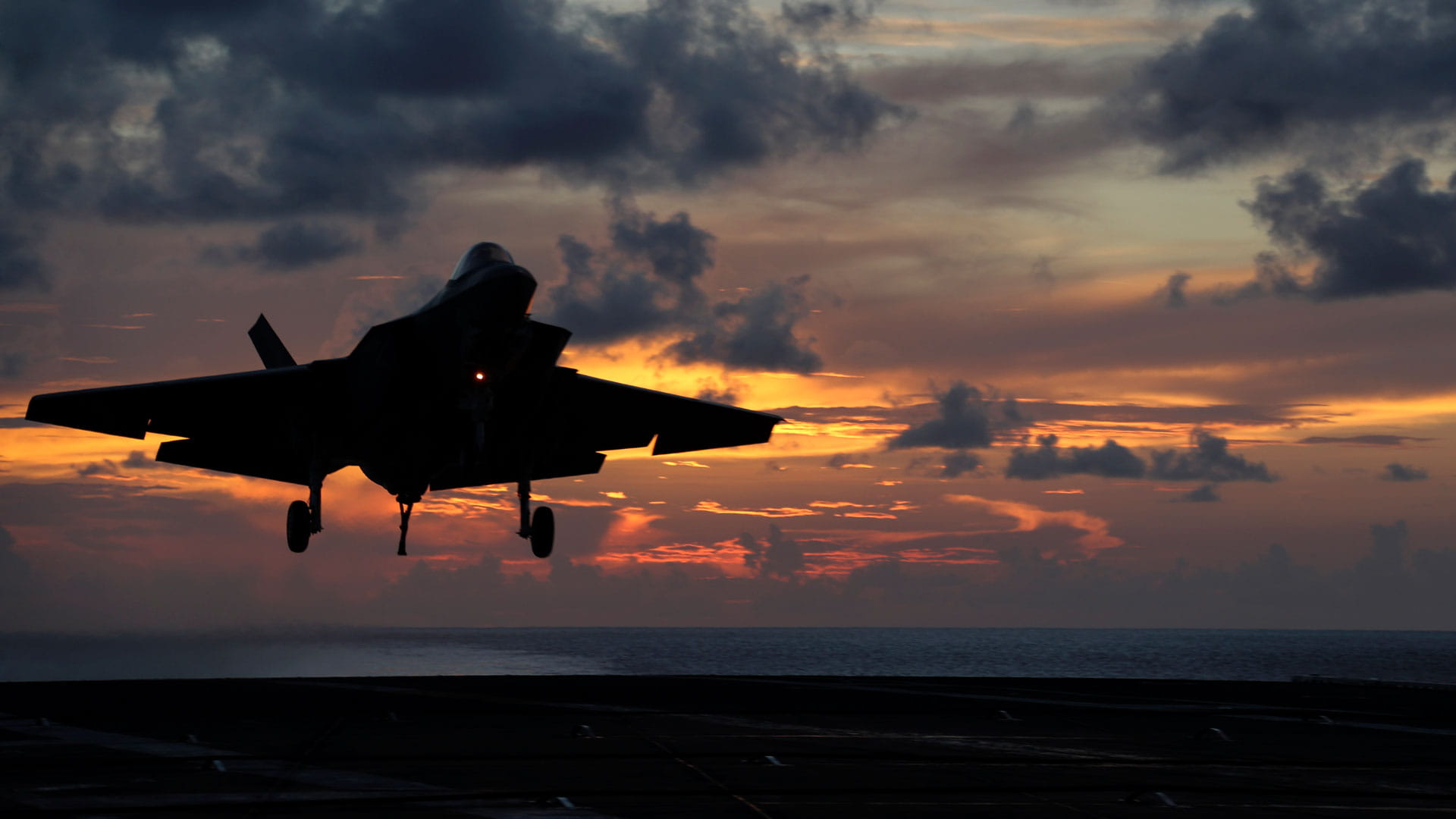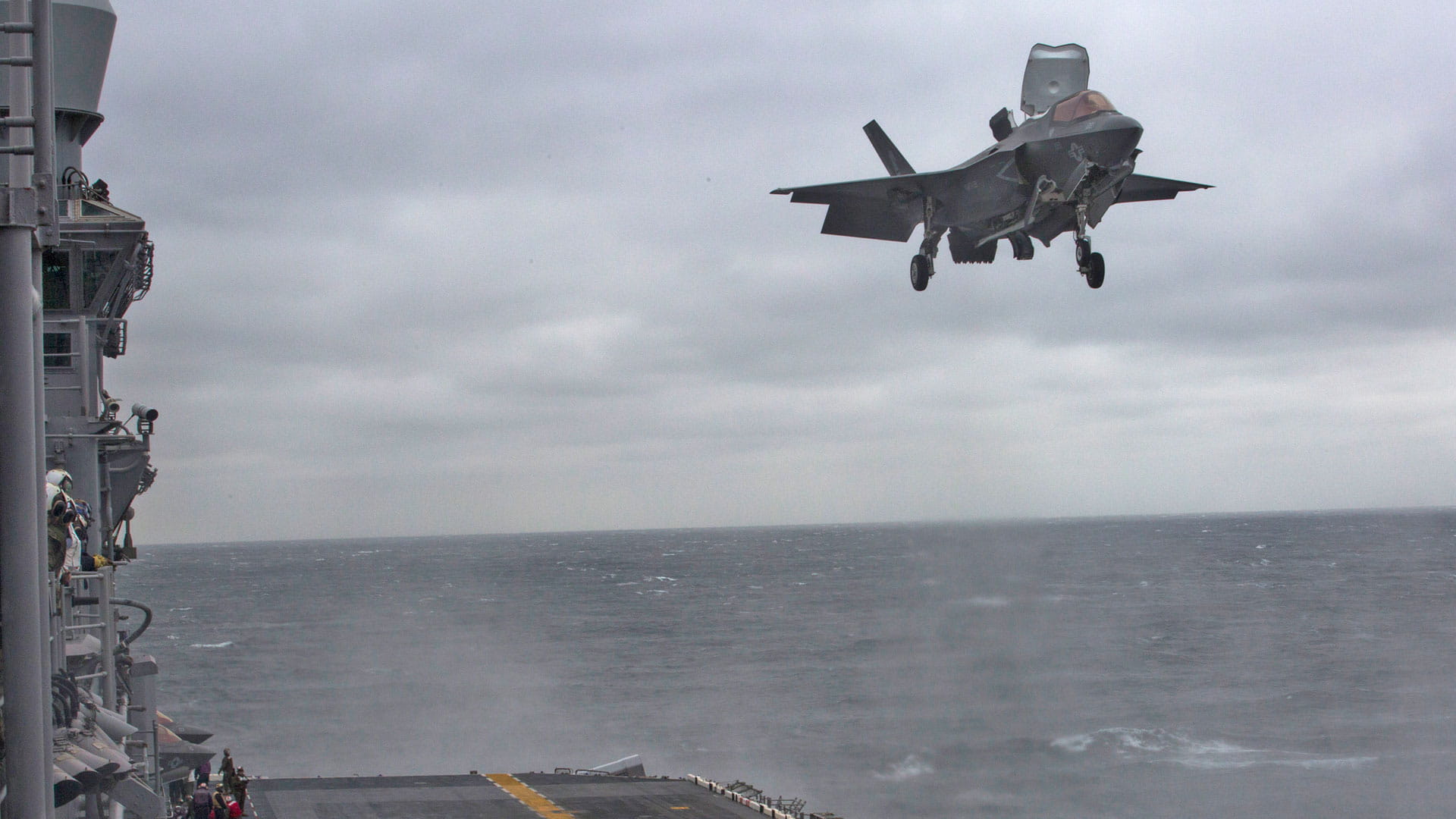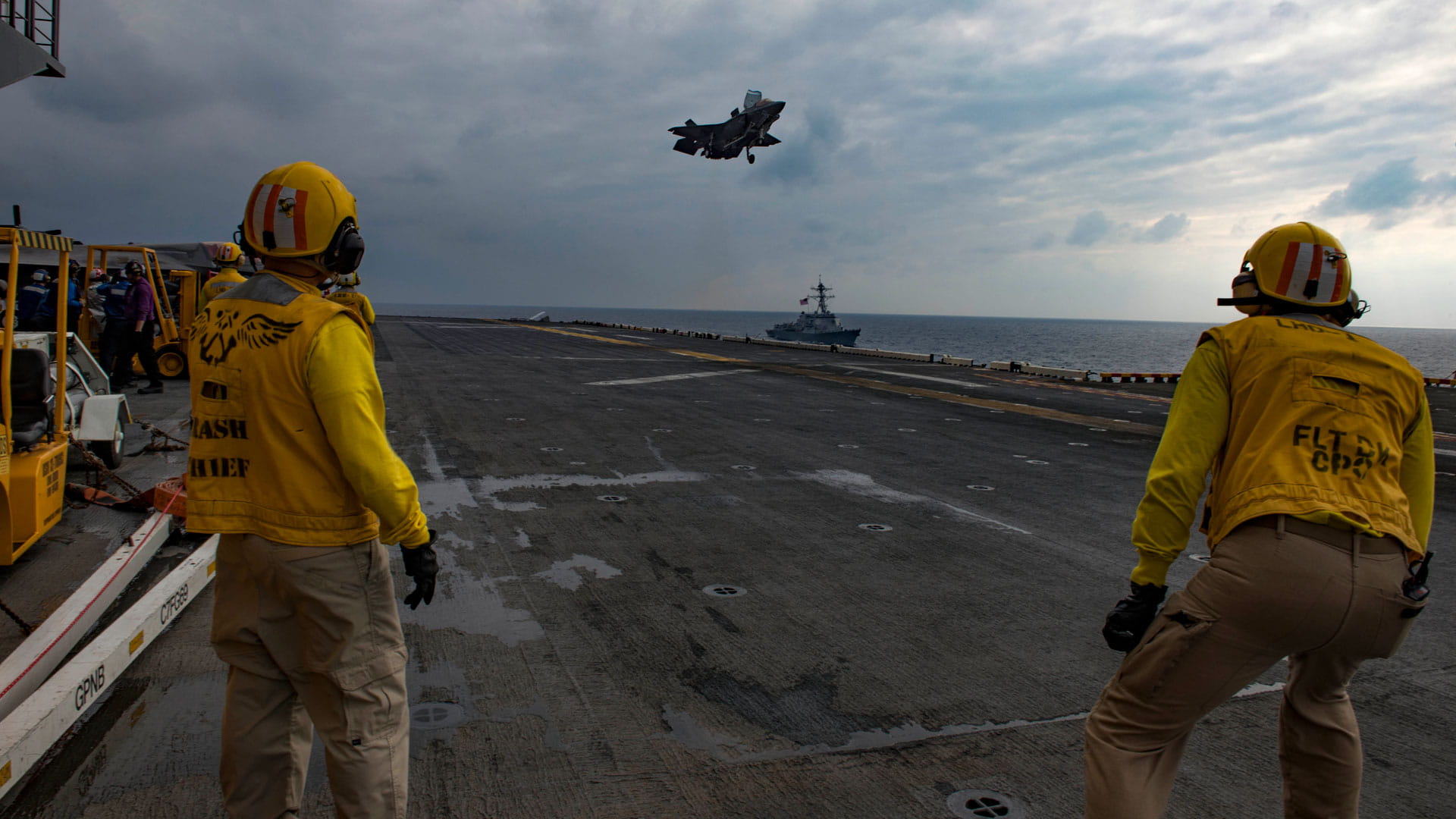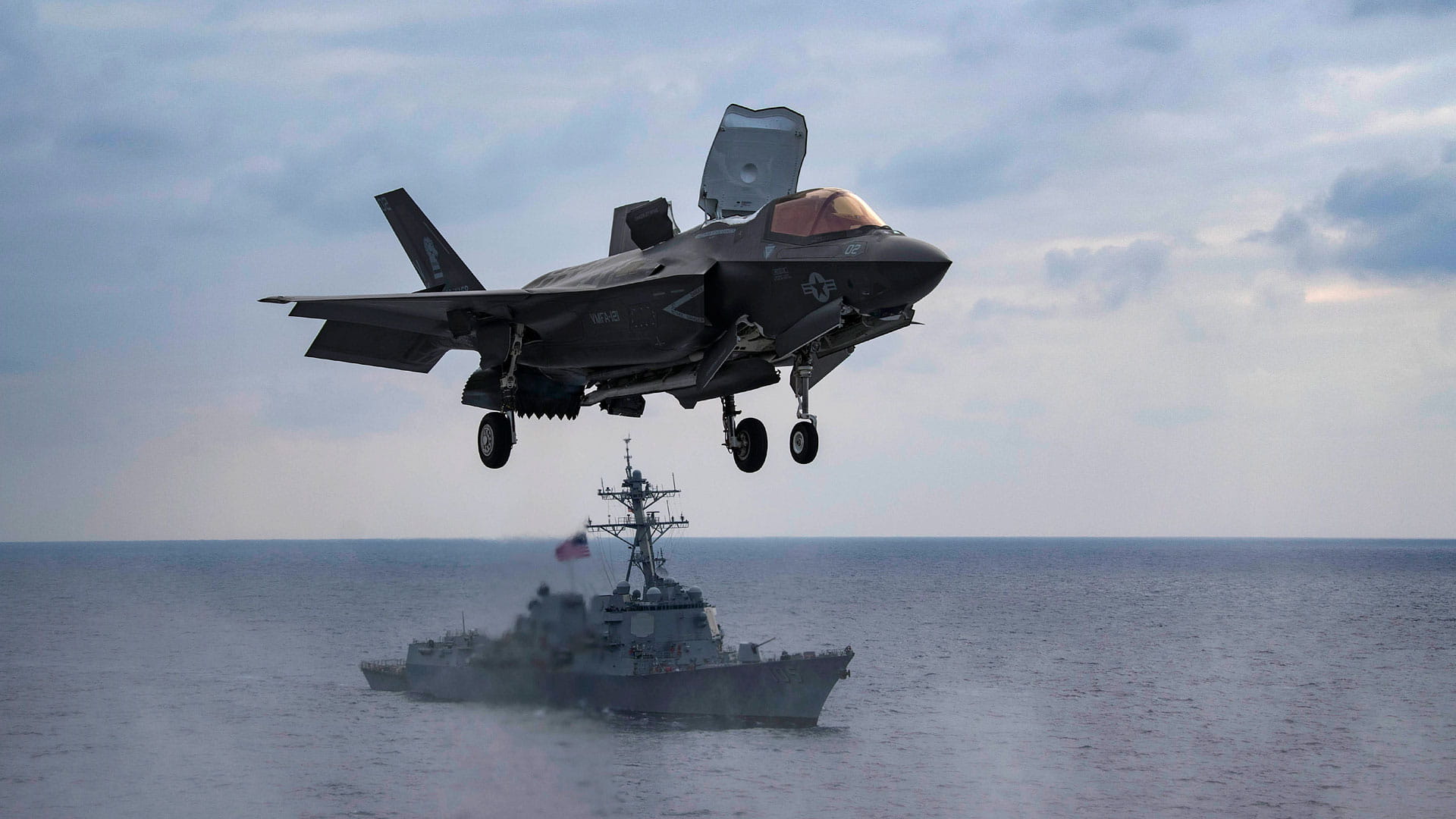Landing guidance with pinpoint accuracy
Joint Precision Approach and Landing System (JPALS) is a software-based, high-integrity differential GPS navigation and precision approach landing system that guides aircraft onto carriers and amphibious assault ships in all weather and surface conditions. It uses an anti-jam encrypted datalink to communicate between the aircraft and an array of GPS sensors, antennas and shipboard equipment.
Supported by a team of Collins Aerospace employees, the eJPALS deployment provided an opportunity for the Marines to demonstrate the system’s expeditionary capabilities with the F-35B.
Advanced technology and development of landing systems
Collins Aerospace created the framework for the JPALS program, and in 2008, partnered with the U.S Navy to begin developing the technology to enhance aircraft landing systems. The program is currently in production to outfit all aircraft carriers and amphibious assault ships for the Naval Services.
In the summer of 2018, U.S. Marine Corps F-35Bs deployed aboard the USS Wasp using JPALS to guide them onto the deck. JPALS is also installed on the USAF land-based F-35A and USN/USMC carrier-based F-35C. The MQ-25A multi-mission unmanned vehicle, also known as the Stingray, will be JPALS equipped and will provide inflight refueling, enabling aircraft to extend their ranges.
JPALS for the future
Collins believes all military services, including international customers, could benefit from using JPALS to support expeditionary operations. Building on the JPALS program, expeditionary JPALS (eJPALS) provides a rapid deployable, differential GPS based alternative to expeditionary operations in all conditions. The system enhances operations in harsh environments, giving aircraft precision landing capability in challenging terrain conditions.
Former airmen discuss advanced technology like the expeditionary Joint Precision Approach and Landing System which enables a pilot to land in austere environments.
The ground system utilizes a secure, discrete data link only received by JPALS equipped aircraft.
Range and bearing out to 200 NM (discrete TACAN), surveillance tracks out to 60 NM, precision landing guidance starting at 10 NM.
A single expeditionary JPALS can handle 50 simultaneous approaches to multiple touchdown points within 20NM radius of the ground station.
Expeditionary JPALS is portable: HMMWV-sized and deployable in a single C-130, the system can be up and running in less than 90 minutes by only two personnel.
Designed for operations in all weather, rugged terrain and austere environments.

